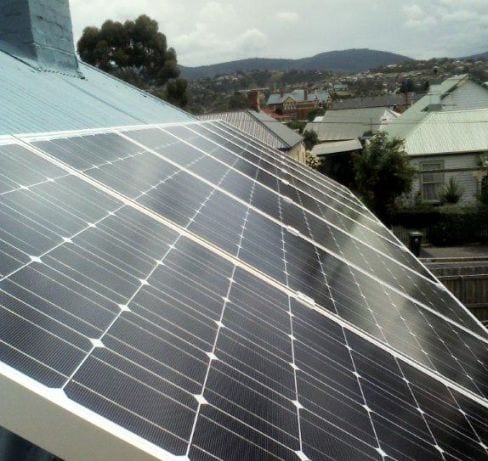Renewable energy advocates in Tasmania have called on the state government to take measures to ensure “fair treatment” for rooftop solar owners, after huge cuts to the amount they are paid for solar energy exported to the grid.
Over the last two years in Tasmania, the feed-in tariff (FiT) for exported solar electricity has been slashed from 28c/kWh, to 8c, to 6.1c.
From July 01 this year, the rate was cut again, to 6.05c for electricity that, it has been pointed out, is then sold on to non-solar households for 25.2c/kWh.

“The latest electricity tariff changes announced by the economic regulator add insult to injury for solar owners and installers,” said Jack Gilding, executive officer of the Tasmanian Renewable Energy Alliance, in a statement on Wednesday.
“Electricity prices have risen by nearly 2 per cent, but the amount that solar owners are paid for electricity they put back into the grid has gone down.”
Gilding said that a further metering software problem had exacerbated the inequity dealt to Tasmanian solar owners, with some found to be paying an extra energy charge, as if they were receiving electricity from the grid, rather than exporting to it.
“Solar PV remains a good investment for many homes and businesses but for the industry to grow again it needs a fair deal from government and consumers need clarity and consistency around policy,” Gilding said.
“Solar owners should be fairly rewarded for providing electricity close to the point of use and avoiding the need for infrastructure that makes up nearly half the cost of electricity.”
To this end, TREA has launched a petition and written to state energy minister Matthew Groom requesting a meeting to discuss what needs to be done by the state government to ensure solar owners were getting a fair deal.
Groom, despite being a Liberal Party MP, appears to have a reasonable appreciation of the importance of renewable energy, and has even spoken publicly in favour of wind energy and the RET – two major Coalition unmentionables.
“I support the renewable energy (target) broadly,” Groom told the Tasmanian Minerals and Energy conference at Queenstown last week, where he also called for more renewable energy infrastructure to be built, to capitalise on the state’s “extraordinary” green energy potential.
“We have extraordinary resources in Tasmania and some of the best sites on the face of the planet on which to build them,” he said.
But as TREA notes, the state’s solar industry is actually contracting – a factor that, along with reduced hydro output and curtailed wind plans, has seen Tasmania shift from being a net exporter of renewable energy to an importer of energy.
According the TREA, Tasmania spent $34 million more buying brown-coal fired electricity from Victorian in the last financial year than it earned exporting renewable energy to the mainland.
“The state government needs to take action to ensure that Tasmania again reaps the financial, economic and environmental benefits that flow from being an exporter of renewable energy,” said Gilding. “A vibrant solar industry is an essential part of this.”










